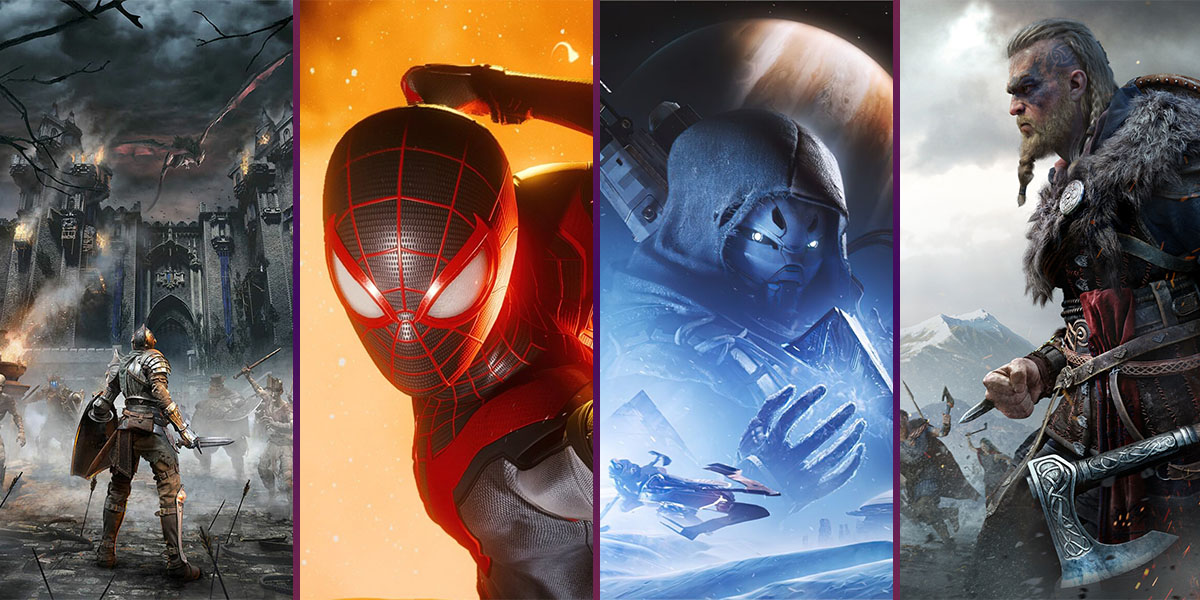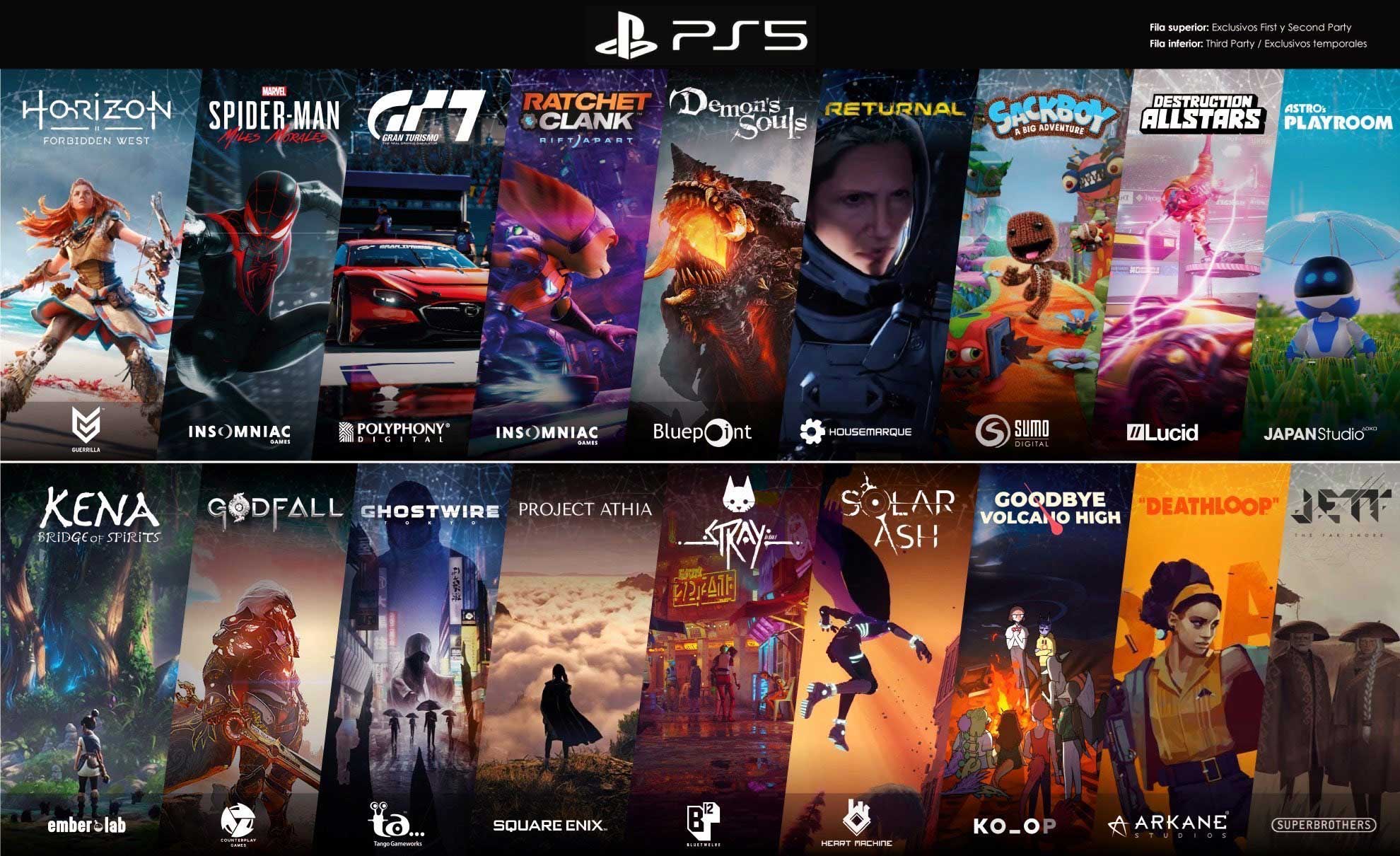Top PS5 Games You Should Play and Sony's Future in the Gaming Industry
The Must-Play PS5 Titles So Far
Sony has delivered some truly incredible first-party experiences on the PS5 since its launch in November 2020. While the console is still in its early days, there are already a robust selection of top-tier exclusive PlayStation 5 games that every owner of the system should experience. From single-player adventures to multiplayer smash hits, here are some of the most memorable PS5 games released so far that deserve your attention.
An Early Showcase of Next-Gen Power with Spider-Man Miles Morales
Insomniac Games kicked things off with Marvel’s Spider-Man: Miles Morales, a stunning follow-up to 2018’s critically-acclaimed Spider-Man. While a shorter experience than its predecessor, Miles Morales was the perfect way to showcase the raw horsepower of the PS5. With lightning-fast loading thanks to the SSD and dazzling ray-tracing effects, this web-slinging adventure set the bar high for next-gen visuals.
Remastered Web-Slinging Bliss with Marvel’s Spider-Man
No PS5 library is complete without the remastered version of the original Spider-Man game. Marvel’s Spider-Man: Remastered takes the acclaimed open-world Spider-Man experience and enhances it with improvements like enhanced textures, improved reflections, better loading times and a choice between a beautiful fidelity mode or a smoother frame rate mode. For newcomers and veterans alike, it’s a must-play.
A Treasure Trove Adventure Through the Uncharted Series
Naughty Dog delivered another stellar compilation with Uncharted: Legacy of Thieves Collection. Bundling together Uncharted 4: A Thief’s End and the Lost Legacy spin-off, this package offers tens of hours of cinematic platforming, exploring ruins, and shootouts. With enhanced graphics taking full advantage of the PS5’s horsepower, Uncharted fans can revisit - or experience for the first time - these modern classics in stunning fashion.
An Emotional Post-Apocalyptic Masterpiece with The Last of Us Part 1
Perhaps the most anticipated remake was The Last of Us Part 1. While the original game is still widely considered one of the best stories ever told in the medium, Naughty Dog took their unrelenting and emotional tour de force into a new generation. With next-gen enhancements like improved visuals, more realistic animations and haptic feedback/adaptive triggers adding to the atmosphere, experiencing Joel and Ellie’s journey has never felt more immersive.
A Norse Epic Adventure Full of Mysteries in God of War Ragnarök
Continuing the redesigned God of War storyline that kicked off in 2018, God of War Ragnarök takes Kratos and Atreus on an unforgettable Norse mythological journey. Spanning diverse climates and bringing epic boss fights, puzzles and story beats, this may be the most visually stunning exclusive yet for PS5. With deeper combat, more spectacular set-pieces and mysteries revealed, this one is sure get Goty buzz.
A Stunning Open-World Adventure Among Machines in Horizon Forbidden West
Guerrilla Games delivered perhaps the most graphically impressive exclusive yet for PS5/PS4 with Horizon Forbidden West. Picking up Aloy’s story years after the original, this vast open world offers countless landmarks to discover among majestic vistas. With updated combat, crafting and an incredible machine roster, diving into the mysterious ruins and facing off against ancient threats is a visually-stunning thrill. While these represent some of the most impressive exclusives so far, there are even more great games that highlight how far the PS5’s cutting-edge technology can push visuals and gameplay. From Astro’s Playroom to Ratchet & Clank: Rift Apart to Stray, the platform is delivering memorable experiences that justify next-gen hardware. However, to maintain momentum, Sony must ensure a steady stream of compelling releases and address potential issues with their strategy and messaging.
Criticism Over PS5 Game Choices and Missing Features
While the library of PlayStation 5 games continues growing at a healthy pace, some have leveled criticism at Sony’s approach. For example, one player drew attention after sharing pictures of the 3 PS5 games and 7 PS4 titles in their collection. This called into question whether Sony is fully utilizing the potential of its latest system or merely incrementally updating prior-gen experiences. Many have observed how several PS5 games may simply represent $70 DLC with nominal resolution and frame rate boosts. Without truly next-gen features, some worry the console will not have a unique value proposition compared to PS4. Sony has also faced skepticism for not fully unlocking capabilities like variable refresh rate, Dolby Vision support and expanded storage through additional M.2 slots. If issues around missing features and backward compatibilityholdbacks persist, itcould undermine enthusiasm around investments in the platformlong-term.
Lessons from Complacency After Past Console Success
To maintain momentum in this new generation, Sony must learn from mistakes of the past. Both the PlayStation 2 and PSP saw immense success in their lifecycles, yet their successors faced challenges partly due to complacency on Sony’s behalf. After the record-shattering PS2, the more expensive PlayStation 3 had a lackluster launch hampered by a weak game library and high price tag. Similarly, momentum around the PSP was hurt by the successor PlayStation Vita having fewer high-profile games, a premium price point, and less third-party support. As the PC and mobile spaces grew more competitive, Sony was slow to change its strategies. If they hope to avoid facing stronger challenges from Microsoft and Nintendo this time, continuous investment and adaptations must be a priority rather than resting on laurels of prior wins.
Growing Dominance of the PC Gaming Space
Another potential challenge looms large over the entire console sector - the rising prominence of PC gaming. According to research firms, the computer games market is now neck-and-neck with consoles in terms of revenue and expected to surpass $50 billion by 2023. This is thanks in large part to digital storefronts like Steam, the rise of esports, and subscription services like Xbox Game Pass coming to Windows PCs. With high-end gaming PCs now capable of matching or exceeding console specs for equivalent prices, and the industry’s biggest franchises increasingly releasing on Windows day-and-date, PC presents serious competition. This puts pressure on the value proposition of dedicated boxes from Microsoft, Nintendo, and Sony going forward. New consoles will need to offer unique selling points beyond raw power to win over gamers with high-end PCs.
Microsoft’s Positive Moves with Xbox and Cloud Gaming
While Sony faces increased threats on multiple fronts, Microsoft has adapted with a strategy positioning them well for the future. Their acquisition of ZeniMax Media brought blockbuster franchises like Doom, Fallout and Elder Scrolls under their umbrella. More importantly, unifying Xbox, PC and cloud through Game Pass creates a cohesive ecosystem across devices and taps intoSubscription services’ growing popularity. Having Game Pass available on both console and Windows PC with day-one releases leverages their presence in both spaces. Meanwhile, Project xCloud expands Game Pass to any mobile or tablet, enabling on-the-go gaming without dedicated hardware. This model already boasts over 25 million subscribers, showing appeal versus the traditional model of separate console and client platforms. By linking ecosystems and leveraging the cloud, Microsoft is well-set to compete in an evolving landscape.
Outcomes Sony May Face Without Adaptation
In these disruptive times, staying static could threaten Sony’s position as a leader in the gaming industry. If they fail to meet rising expectations aroundbackward compatibility, cloud functionality and cross-platform services, momentum may slow for their newest hardware investments. There are hypothetical scenarios Sony risks facing without adapting their strategies:
- Reduced Market Share: As PC and mobile continually grow their install bases, a lack of multi-platform efforts could see more third-party games prioritizing other ecosystems over PlayStation.
- Third-Party Support Wanes: Similar to how Sega exited the hardware business, Sony risks becoming just a games publisher/developer if third-parties move to platforms with larger audiences.
- Loss of Exclusives: To fund future projects, their studios may release more games on other consoles/PC if the PS userbase shrinks due to non-competitive strategies.
- Acquisition or New Partnerships: Like Microsoft, steady subscriber growth elsewhere could make Sony an attractive target for larger acquisition if their console presence erodes. Or they may need to form unusual publishing/distribution deals. By recognizing emerging challenges, adopting popular mainstream computing and subscription models, and emphasizing their leadership in exclusive single-player content, Sony can safeguard its position in the industry for many years to come. But complacency or reacting slowly could endanger the prosperous run PlayStation consoles have long enjoyed.
Conclusion
In summary, while the PlayStation 5 launch library showed incredible potential for single-player blockbusters, criticisms around missing features and an overreliance on PS4 games raises questions about Sony’s long-term strategy. Lessons from past console cycles prove the risks of complacency, and changes in the broader industry increasingly threaten Sony’s dedicated hardware business. However, by stepping up investment in areas like cloud gaming, expanding Game Pass-style subscription services, strengthening multiplatform efforts, and ensuring

